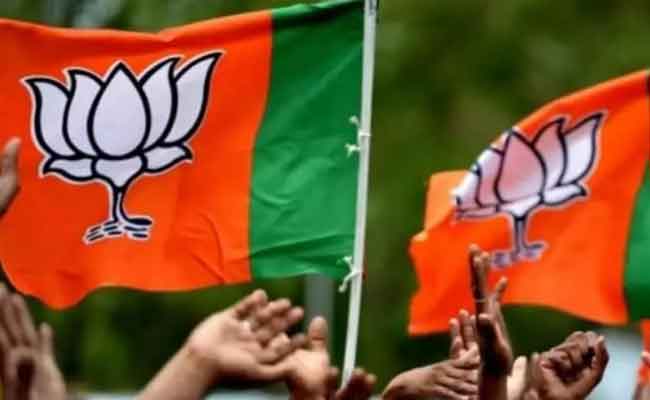To Fight BJD Or Be Friends? Odisha BJP Caught In A Vortex Of Compulsions & Contradictions

Bhubaneswar: The BJP put up a creditable performance in the just-concluded Pipili byelection, but that wasn’t enough to upset the BJD applecart. Can being second at best fulfil the saffron party’s aspirations in Odisha?
Notwithstanding the pride the BJP takes in it replacing the Congress as the main Opposition party in the state, the fact remains that it has thus far failed to pose a serious threat to the ruling party. For more than 12 years, since the BJD and the BJP severed their decade-old alliance, the saffron outfit has struggled to match the poll juggernaut of Naveen Patnaik & Co. Even at the height of Prime Minister Narendra Modi’s popularity and Amit Shah’s personal involvement during the past few years, the party has not come close to challenging the BJD’s over two-decade-old dominance of Odisha politics.
The closest the BJP has come to emerge as a tough rival was in the 2017 panchayat polls when it won around 300 out of the 854 zilla parishad seats in the state. Despite the hype and blitzkrieg in 2019, the party was nowhere near to achieving its much-touted ‘Mission 120 plus’ and ended up with a paltry 23 MLAs compared to BJD’s 113 legislators in the 147-member House.
What is it then that has put brakes on the saffron party’s growth in a state that ranks amongst the most Hindu states in the country? Is it the BJD’s strong organisational apparatus? Is it BJD president and Chief Minister Naveen Patnaik’s image and popularity? Or, is it the BJP’s own weakness to project itself as the real alternative to the BJD?
Like all political parties, the BJP understandably has its own set of dynamics, flaws and compulsions to deal with. What, however, stands out is apparently its own acceptance, perhaps due to its requirements at the national level, to play second fiddle to Naveen. Being the principal Opposition party in the state, it is a contradiction in terms for the BJP to play footsie with the regional party. But that is exactly what it has of late been doing, and in the process causing more harm than good to its own prospects in Odisha. Ostensibly, it continues to maintain a ‘working relationship’, albeit unofficially, with the BJD through their ‘marriage of convenience’ that started in 1998 came to an abrupt end in the run-up to the 2009 twin elections.
This has been quite evident post the 2019 elections with the BJD-BJP bonhomie consuming media space and political talk on numerous occasions. The election of IAS officer-turned-politician Ashwini Vaishnaw to Rajya Sabha in 2019 as a BJP candidate backed by the BJD amply demonstrated that the two parties do share a tacit understanding, though they are no longer allies. Vaishnaw’s debut in the Union cabinet earlier this year as Railways Minister clearly proved that his election to the Upper House was no sideshow but part of a well-calibrated strategy. From the triple talaq bill to the election of M Venkaiah Naidu as Vice President, the BJP has on various occasions banked on the BJD’s support to have a smooth sail in Parliament.
However hard both parties have tried to downplay such political philandering the facts and perception are apparently not lost on the public. While the BJD, being a regional party advocating a policy of equi-distance from the BJP and the Congress, has smartly managed to project its liaisons with the national party as serving Odisha’s broader interests, the BJP has been found wanting to justify it being in cahoots with its main rival in the state. That the saffron party has, therefore, not risen to a level to gain the Odisha electorate’s confidence and breathe down Naveen’s neck are but an obvious fallout.
The recent Pipili bypoll was no different. Although the BJP had an opportunity to upstage the BJD candidate, it did not put its best foot forward, unable to match BJD’s planning and wherewithal. The party’s performance was no better than the Balasore and Tirtol by-elections about a year ago when it lost convincingly. In fact in Balasore it had failed to retain its seat, finishing second and taking consolation that the Congress had fared worse by ending up third.
True, the BJP’s vote share in the state has increased significantly in recent years, but it has not proved enough. From factionalism, national compulsions versus regional aspirations, inadequate ground-level penetration in certain pockets to lack of winnable candidates in several constituencies, especially in the coastal region, the BJP has its fair share of issues to resolve in Odisha. But what is most glaring is it being devoid of a clear narrative: Whether it wants to treat the BJD as a political friend or foe? Whether it wants to replace Naveen or bide for its own time?
Until the BJP honestly answers these questions, it will in all probability have to remain satisfied with the runner-up position.

Comments are closed.